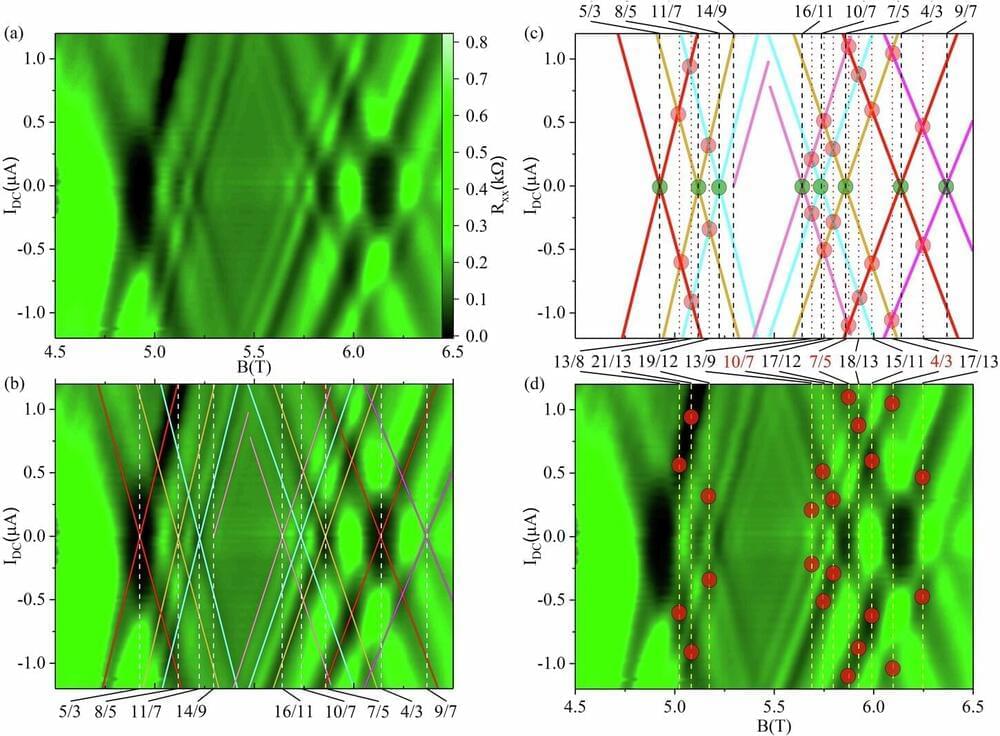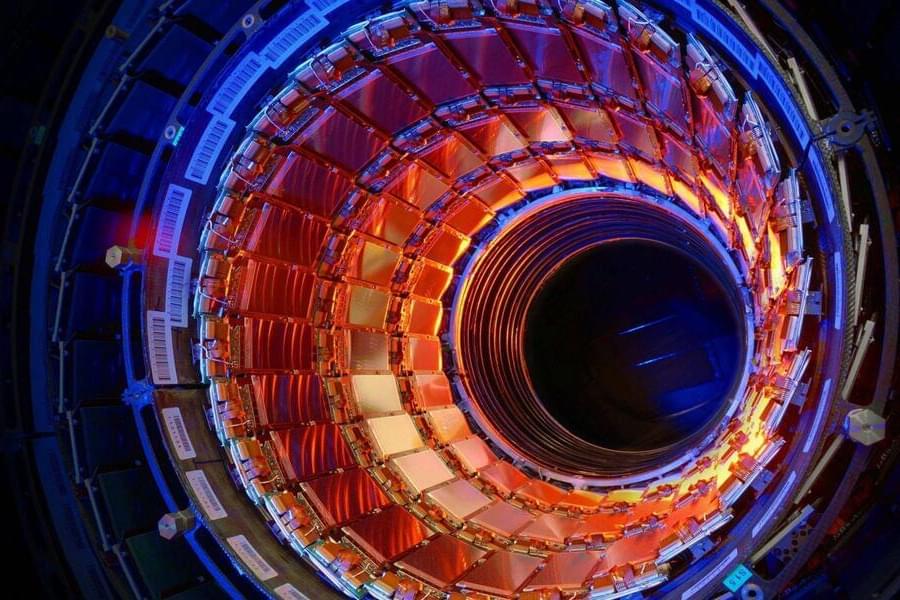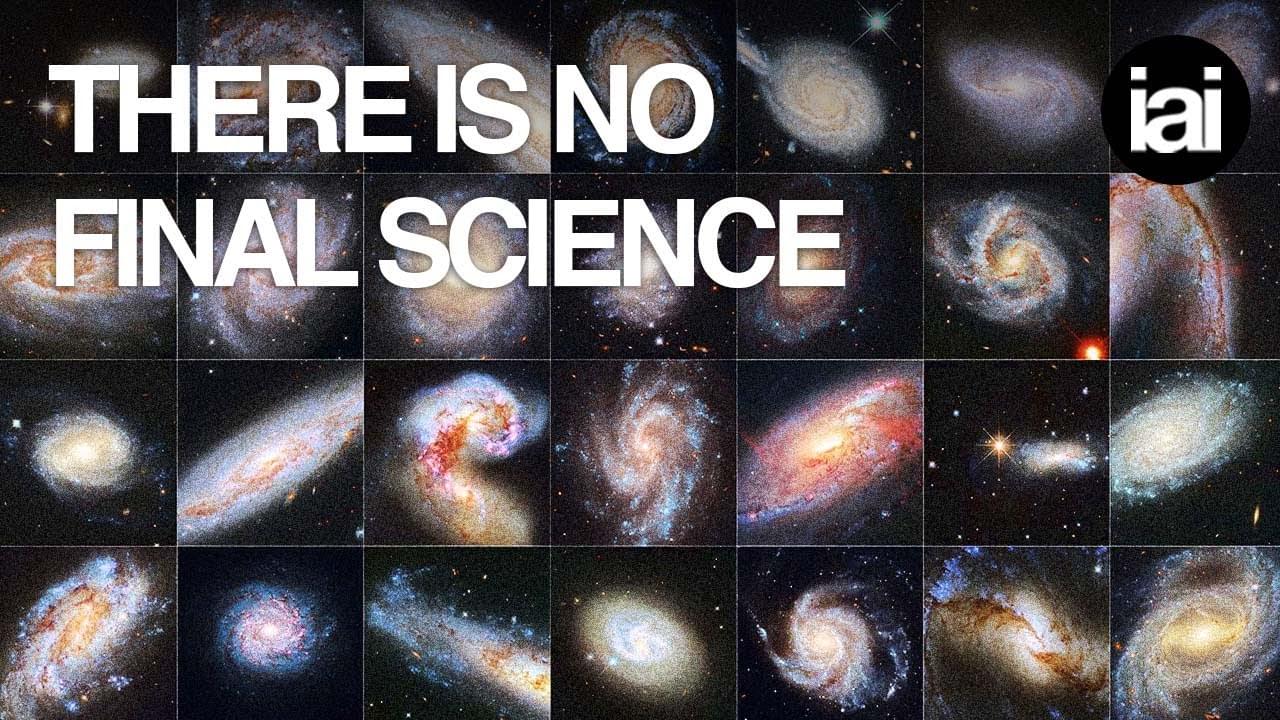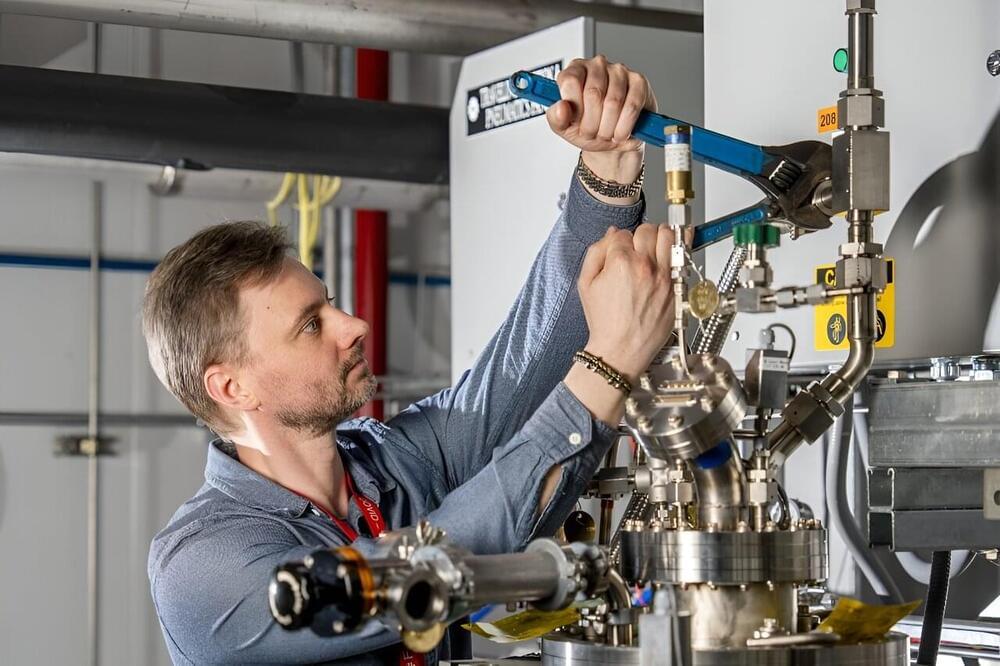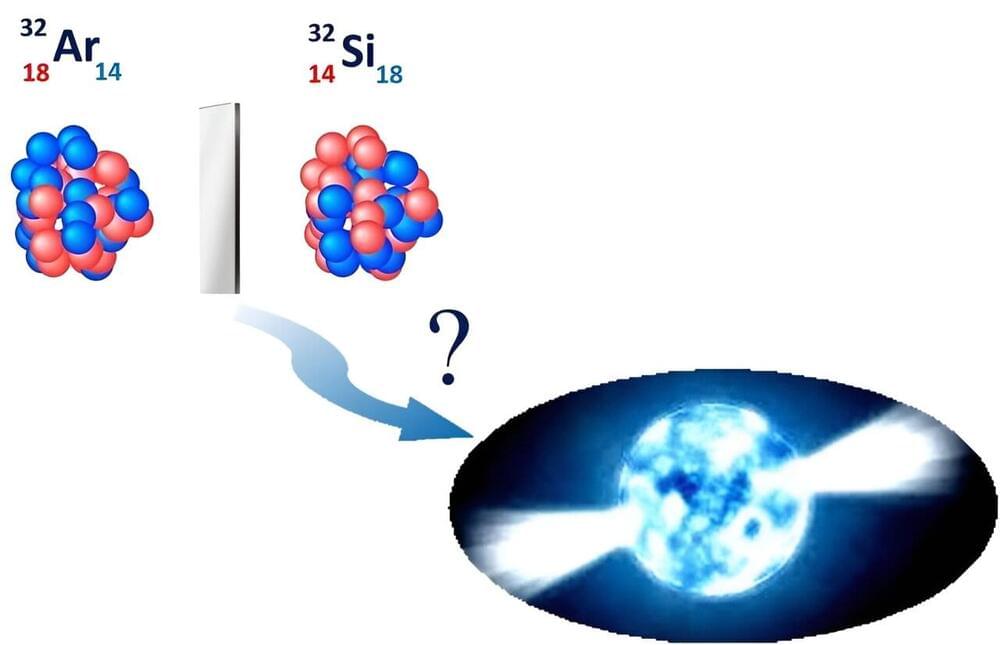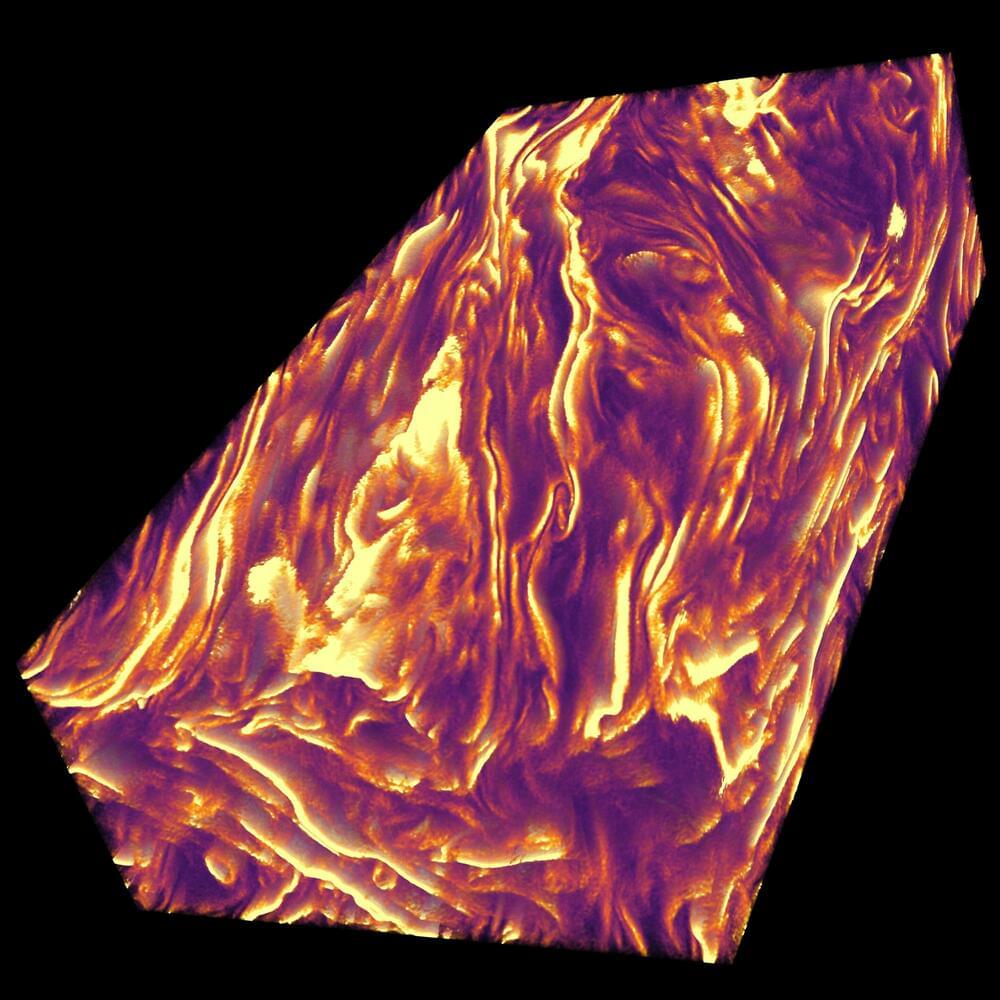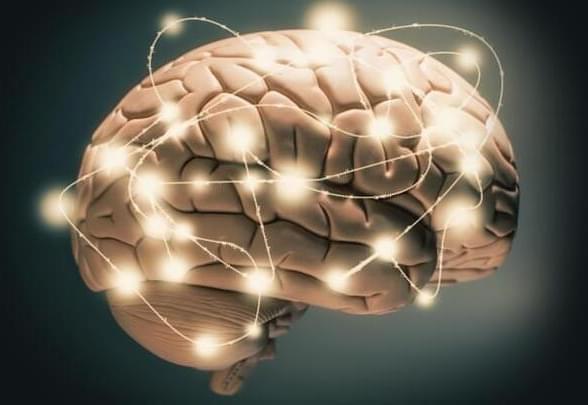Aug 17, 2024
Physicists uncover new phenomena in fractional quantum Hall effects
Posted by Saúl Morales Rodriguéz in categories: particle physics, quantum physics
Imagine a two-dimensional flatland, instead of our three-dimensional world, where the rules of physics are turned on their head and particles like electrons defy expectations to reveal new secrets. That’s exactly what a team of researchers, including Georgia State University Professor of Physics Ramesh G. Mani and recent Ph.D. graduate U. Kushan Wijewardena, has been studying at Georgia State’s laboratories.
